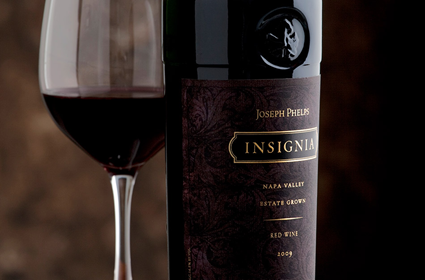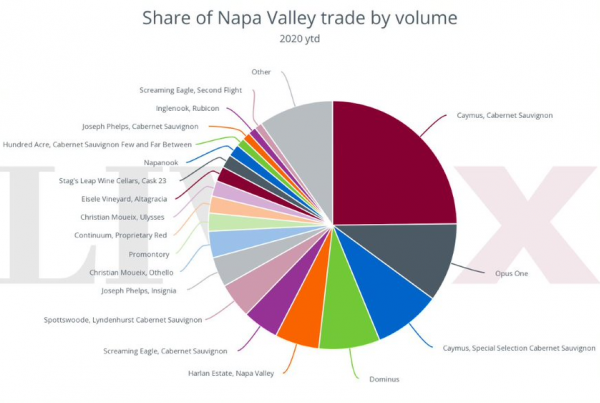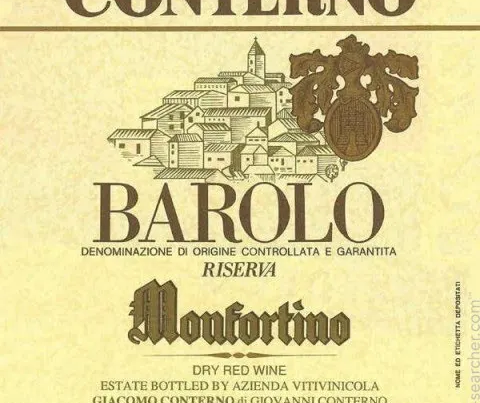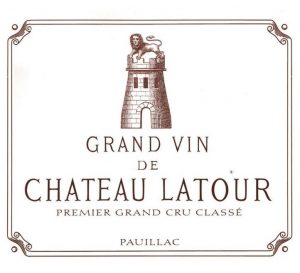
Owner: François Pinault
Classification: First Growth
Vineyard area: 93 hectares
Average annual productions: 100,000 bottles (Latour), 130,000 bottles (Forts Latour), 70,000 (Pauillac De Latour)
Colour: Red
Grape varieties planted: Cabernet Sauvignon (76%), Merlot (22%), Cabernet Franc (2%) and a small amount of Petit Verdot.
History
Chateau Latour boasts a rich history dating back to the 14th century. In 1331, amid one of the many skirmishes of the Hundred Years War, permission was granted for a defensive tower to be built to guard the estuary against attack. Although it was completely destroyed by the King of France’s forces a century later, Chateau Latour takes its name from the fortress that once stood on the property, likely on the south-east side of the vineyard. The estate’s existing dovecot, often mistaken for the original tower, was built during the 1620s, apparently using stone from the razed fortress. It remains a potent symbol of the estate.
During the late 17th century, viticulture became an integral part of life at Chateau Latour. Through marriage and inheritance, the estate passed to Marquis Nicolas Alexandre de Segur (along with Lafite Rothschild), who was aptly nicknamed the Prince des Vignes. Throughout the 18th and 19th centuries, a succession of split inheritances and the onset of the French Revolution saw ownership divided and shared among family members and outside parties, though, this instability appears to have had little impact on the quality of wine production, with the grand vin acquiring First Growth status in 1855.
After more than 300 years, the long lineage of Segur family ownership finally came to an end in 1963, when majority ownership was sold to the Pearson Group. The sale drove significant investment and innovation, including the introduction and first vintage of Forts de Latour in 1966– a second wine vinified in the same way as the estate’s grand vin, but made from grapes grown in the small plots of Petit Batailley, Comtesse de Lalande and Les Forts de Latour. Despite the progress and modernisation, however, Latour was sold to Allied Lyons in 1989, and was then bought by its current owner, Francois Pinault, in 1993.
In 2012, Latour announced that its 2011 vintage would be the last vintage sold En Primeur. In a letter to negociants, Frédéric Engerer, who runs Latour on behalf of its owner François Pinault, explained that wines would only be released when the team at the Chateau felt they were ready: seven years after the vintage for Forts Latour and 10 to 12 for Latour itself.
Latour 2006 and the first vintage of Forts Latour 2012 since the Chateau’s exit from En Primeur, were released ex-Chateau last week. For price analysis on the releases, click here.
Market Performance
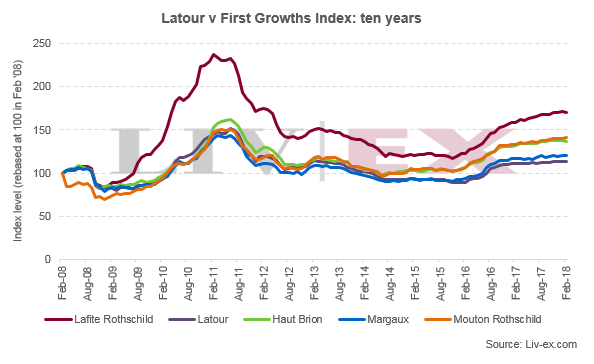
Despite lagging behind other First Growths in terms of price performance, the Latour index – which tracks the price movement of the last ten physical vintages – remains in positive territory over both one and ten year periods. It has gained 2% in the past year and 13% over ten years.
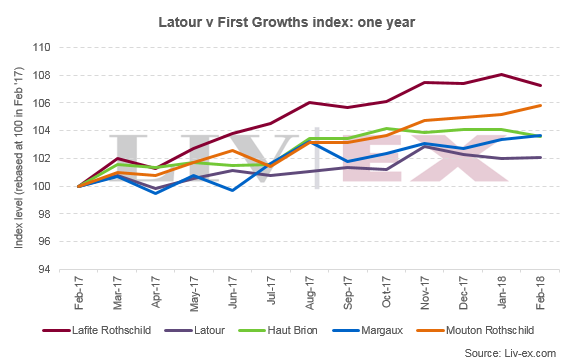
Power brand
Each year in conjunction with the drinks business, Liv-ex publishes a list of the most powerful brands in the fine wine market. In the 2017 edition of the Power 100, Latour ranked 4th for its share of Liv-ex trade by value, just behind Lafite, Mouton and Haut Brion. It placed 12th in the overall rankings.
Market Prices
The chart below compares Latour Market Prices against their Wine Advocate scores. Of the last ten physical vintages, three wines from Latour have received a perfect Robert Parker score: the 2010, 2009 and 2003.
As the chart shows, the wines from the 2009 and 2010 vintages command a significant premium to those from other years. These two vintages are priced at £9,956 and £11,000 per 12×75 respectively. The 2003 and 2005 command around £7,000, while all the other recent physical vintages are below £5,000.
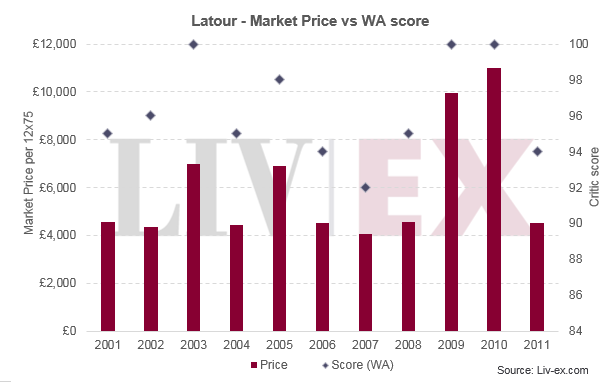
Prices for Latour are 84.4% correlated to Wine Advocate score. When analysing current Market Prices using Liv-ex’s ‘fair value methodology’, three vintages fall below the trend line.
Notably, the 2003 vintage looks attractive. Robert Parker awarded the wine a perfect 100-points and in 2014 described it as “undeniably the most sumptuous, opulent wine made [at Latour] since the 1982 or 1961”. It is currently available at a 36.3% discount to the equally scored 2010.
The 2002 and 2007 also stand out as wines offering relative value based on their Wine Advocate scores.

Vintage Performance

The chart above shows the change in prices of Latour for the last ten physical vintages. Over the past twelve months, the best-performing vintage has been the 2004, up 8.5%. The 2001 followed behind with a 5.4% increase.
Despite its relatively attractive price, the 2003 was the biggest faller, down 2.5%. The 2002 and 2009 vintages also dipped slightly.
Looking for more spotlights? Recently, Liv-ex featured an article on Petrus. To read the post, please click here.
[mc4wp_form id=”18204″]



